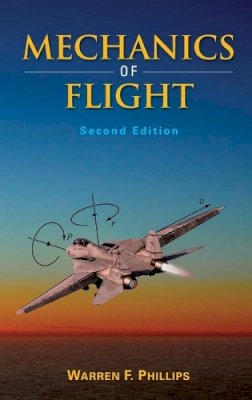
Mechanics of Flight
Warren F. Phillips
Explains the principles of flight mechanics through worked examples and progressive problem solving
With its unique balance of breadth and depth, coupled with a comprehensive presentation of theory and applications, Mechanics of Flight is rapidly becoming the textbook of choice to enable readers to master the science and mathematics of flight mechanics. By progressively building on the formulation and solution of simpler problems associated with aircraft performance, static stability, and control, the author guides readers from fundamental principles to the development of the general equations of motion and continues through dynamic stability, aircraft handling qualities, and flight simulation.
In response to feedback from students, instructors, practicing engineers, and test pilots, this Second Edition features much new material, including new and updated coverage of:
- Effects of nonlinear aerodynamics on aircraft stability
- Effects of tail dihedral on longitudinal and lateral stability
- Lateral trim, engine failure, and minimum-control airspeed
- Dynamic stability constraints and center-of-gravity limits
- Flight simulation in geographic coordinates
Throughout the text, many new worked examples demonstrate how to apply principles of flight mechanics to solve engineering problems. Moreover, the text offers an array of modern and classical techniques for solving a broad range of problems in flight mechanics. Unique features include presentations of the numerical lifting-line method for efficient and accurate evaluation of stability derivatives and the quaternion formulation for six-degree-of-freedom flight simulation. Moreover, the author provides the detail needed to enable readers to write their own code.
Mechanics of Flight is designed as a textbook for a two-semester sequence of courses for students in mechanical and aerospace engineering. In addition, the text's self-contained chapters allow instructors to select individual topics for one-semester courses. The book is also a valuable reference for engineers working in the aerospace industry.
Product Details
About Warren F. Phillips
Reviews for Mechanics of Flight
